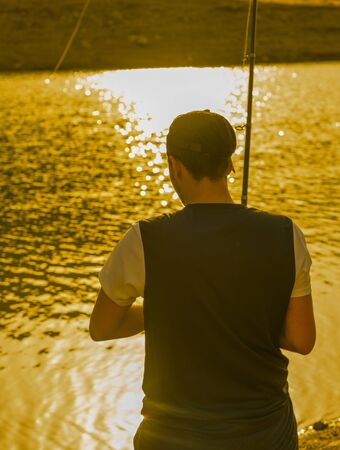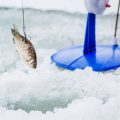1. Understanding the Different Types of Fishing Line
If you’re gearing up for your first fishing trip in the U.S., picking the right fishing line can feel a little overwhelming. Don’t worry—we’ve all been there! Before you head out to your local lake, river, or even the coast, it helps to know the basics about the three main types of fishing lines: monofilament, fluorocarbon, and braided. Each comes with its own pros and cons, and knowing what makes them unique will help you make a smart choice for your adventure.
Monofilament Line
This is often the go-to for beginners because it’s affordable, easy to handle, and super forgiving when you’re learning how to cast or tie knots. Monofilament stretches more than other types, which helps absorb sudden pulls from fish—a big plus if you’re fishing with kids! The downside? It’s not as strong as braid or as invisible as fluorocarbon, and sunlight can weaken it over time. Still, it’s great for casual days at popular spots like local ponds or family-friendly lakes.
Fluorocarbon Line
Fluorocarbon is famous for being almost invisible underwater, making it perfect when fish are feeling picky or the water is extra clear (think trout streams in Colorado or spring-fed Florida lakes). It’s more resistant to abrasion than monofilament, so it stands up well around rocks and logs. However, it’s stiffer and pricier—something to consider if you’re just starting out or planning on lots of practice casts.
Braided Line
Braided lines are all about strength and sensitivity. They have almost zero stretch, which means you’ll feel every nibble—even from smaller fish. Plus, they can handle heavier catches and are perfect for fishing in weedy or heavy cover areas, like bass fishing in Midwest reservoirs. On the flip side, they’re easier for fish to spot in clear water and can be tricky to tie securely if you haven’t practiced those knots yet.
Which One Should You Choose?
Your best pick depends on where you’re fishing and what kind of experience you want. Heading out with kids for a relaxed day? Monofilament might be all you need. Trying your hand at clear-water trout? Give fluorocarbon a shot. Targeting big bass in thick cover? Braided could be your new best friend. No matter what you choose, each type has its place in American fishing adventures—so don’t be afraid to experiment and see what works best for your family!
Matching Your Fishing Line to Your Target Fish
When planning your first fishing trip, one of the most important decisions you’ll make is choosing the right fishing line for the type of fish you hope to catch. It’s a bit like picking out the perfect shoes for an activity—what works for hiking probably won’t be comfortable at a wedding! In fishing, different species require different line strengths and types, and matching your line to your target fish will set you up for success (and fewer stories about “the one that got away”).
Understanding Line Strength (Pound Test)
The strength of a fishing line is usually measured in “pound test,” which refers to how much weight the line can handle before it breaks. For example, if you’re targeting bass, which are known for their feisty fights, you’ll want a stronger line than if you’re after delicate trout in a clear mountain stream.
| Fish Species | Recommended Line Strength (Pound Test) | Line Type | Why? |
|---|---|---|---|
| Bass | 8-15 lbs | Monofilament or Braid | Bass put up a good fight and often live near weeds; strong, versatile lines help prevent breakage. |
| Trout | 2-6 lbs | Fluorocarbon or Light Monofilament | Trout are easily spooked by thick lines; lighter, nearly invisible lines are best in clear water. |
| Catfish | 10-20 lbs | Braid or Heavy Monofilament | Catfish can get big and strong—especially in rivers; sturdy lines help land them safely. |
| Panfish (Bluegill, Crappie) | 2-6 lbs | Monofilament | Panfish have small mouths and are easy to reel in with lighter lines. |
| Walleye | 6-10 lbs | Monofilament or Fluorocarbon | Walleye are cautious; thinner lines increase bites without sacrificing too much strength. |
A Real-Life Example:
If you’re headed out with your kids to a local pond hoping to catch bluegill or crappie, a 4 lb monofilament line is easy to handle and gentle enough for small hands. But if you’ve heard there are some big bass lurking around those lily pads, consider bumping up to an 8-12 lb line so everyone has a fighting chance to reel in something memorable!

3. Considering Your Favorite Fishing Spots
Before you grab your gear and head out, it’s important to think about where you’ll be casting your line. In the U.S., our fishing environments are as diverse as our favorite family road trip destinations! Each spot—whether it’s a quiet pond in the park, a big sparkling lake, a flowing river, or the salty ocean—has its own “personality” and needs when it comes to fishing line. Let’s break down some tips for picking the best line for each place:
Ponds
Ponds are often calm and full of vegetation. If you’re taking the kids to a local pond for some bluegill or bass fishing, a light monofilament line (about 4-8 lb test) is usually perfect. It’s easy to handle, forgiving for beginners, and blends well in clear water.
Lakes
Lakes can hold bigger fish and deeper waters. For these adventures, try stepping up to a slightly heavier monofilament or even fluorocarbon line (6-12 lb test), especially if you’re after larger bass or trout. Fluorocarbon is nearly invisible underwater, which can help if the lake is really clear.
Rivers
Rivers often have current, rocks, and woody debris. Here’s where braided line shines! A 10-20 lb braid gives you strength without extra thickness, so it slices through current easily and helps pull fish away from snags—plus, it holds up well against abrasion.
Saltwater
If you’re heading to the coast for some saltwater fun—maybe trying pier fishing with your family—a strong braided line (20-30 lb test) or heavy-duty monofilament is your friend. Saltwater fish are tough fighters, and the extra strength will help you land those memorable catches. Don’t forget: salt can wear down your gear fast, so rinse everything off when you get home!
Tip for All Locations
No matter where you go, always check local fishing regulations—they sometimes recommend or require specific types of lines to protect the environment. And remember, matching your fishing line to your favorite American fishing spot sets everyone up for a fun and successful day outdoors!
4. Ease of Use for First-Timers
If you’re gearing up for your very first fishing adventure with your kids, choosing a fishing line that’s easy to handle can make all the difference. As a parent who loves sharing outdoor experiences with my children, I’ve learned that the right fishing line not only boosts everyone’s confidence but also keeps the trip fun and frustration-free! Here’s what you should consider when picking a user-friendly line for beginners:
Which Fishing Lines Are Best for Beginners?
For families and parent-kid duos, simplicity is key. Some lines are naturally easier to tie knots with and manage while learning basic fishing techniques. Here’s a quick comparison:
| Type | Ease of Handling | Knot Strength | Tangle Risk | Best For |
|---|---|---|---|---|
| Monofilament | Very Easy | Good | Low | Kids & First-Timers |
| Braided | Moderate | Excellent | Higher (can tangle easily) | Older Kids/Teens Learning Fast Techniques |
| Fluorocarbon | Challenging | Very Good | Medium | Intermediate/Ready for Next Level |
Why Monofilament Stands Out for Families
Monofilament lines are the go-to choice for most families starting out. They’re super forgiving if your little one gets distracted by a dragonfly or needs help reeling in their first catch. Monofilament stretches a bit, which means it’s less likely to snap if someone jerks the rod too hard. Plus, tying knots—like the simple clinch knot or improved clinch knot—is much easier compared to other lines. This means less time untangling and more time making memories together by the water.
Pro Parent Tip:
If you’re fishing with young children, start with bright-colored monofilament lines. They’re easier to see above water, making it simpler for both you and your kiddo to track the line and avoid tangles.
5. Balancing Budget and Quality
When you’re gearing up for your first fishing adventure, it’s easy to get overwhelmed by the price tags on all those shiny reels and colorful lines. The good news is, you don’t have to break the bank to get started! Popular outdoor retailers in the US—like Bass Pro Shops, Cabela’s, Walmart, and even Target—offer a wide selection of affordable fishing line options that are great for beginners. Brands like Berkley, Stren, and KastKing are household names that consistently deliver reliable quality without costing a fortune. If you stick with these trusted brands, you’ll find lines that balance strength and castability for less than $10 or $15 a spool.
We’ve found that shopping in-store can be a fun family experience—kids love seeing all the gear and asking questions! Store associates are usually happy to share tips about which lines work best for local waters or common species. If shopping online is more your speed, check out customer reviews and look for “best value” badges. Don’t worry if you’re not picking top-of-the-line products yet; starting simple lets you learn what works best for your fishing style. The real magic comes from sharing those first catches together, not from having the most expensive equipment on the dock!
6. Quick Tips for Shopping at American Stores
Shopping for fishing line in the U.S. can be a fun part of your first fishing adventure, especially if you know what to expect. Whether you visit a big box store like Walmart, Bass Pro Shops, or Dick’s Sporting Goods, or a smaller local bait and tackle shop, each experience offers something unique. Here are some tips to help you feel confident and get the right gear:
What You’ll Find at Big Box Stores
Big box stores usually have huge aisles filled with all sorts of fishing lines—monofilament, fluorocarbon, braid—in many colors and strengths (called “pound test”). These stores are self-service, so staff may not always be fishing experts, but they’re often friendly and willing to help you find what you need. Look for helpful signs above the shelves and don’t hesitate to ask for the “fishing section” or say, “Where can I find fishing line?”
The Local Bait Shop Experience
Local bait shops are often smaller, cozier, and run by folks who fish themselves. This is where you’ll get personalized advice and maybe even a few stories about the best spots nearby. The owners might ask what kind of fish you’re after or where you’re going—this helps them recommend the perfect line. Don’t be shy! Ask questions like: “What’s biting lately?” or “What line do you use for bass around here?”
Questions to Ask
- “Which line would you recommend for beginners?”
- “Is there a difference between brands?”
- “Do I need a leader line?” (A leader is a tougher piece of line tied to the end.)
Useful American Terms & Slang
- Pound Test: The strength of the line (e.g., 8 lb test).
- Baitcaster/Spinning Reel: Types of reels that match different lines.
- Spooled: Having your reel loaded with new line (“Can you spool this for me?”).
Remember, American shoppers love to chat! If you’re unsure about anything, simply say, “I’m new to fishing—could you help me out?” Most people will be happy to share their knowledge and maybe even some favorite fishing spots. Enjoy your shopping trip—it’s all part of the adventure!


